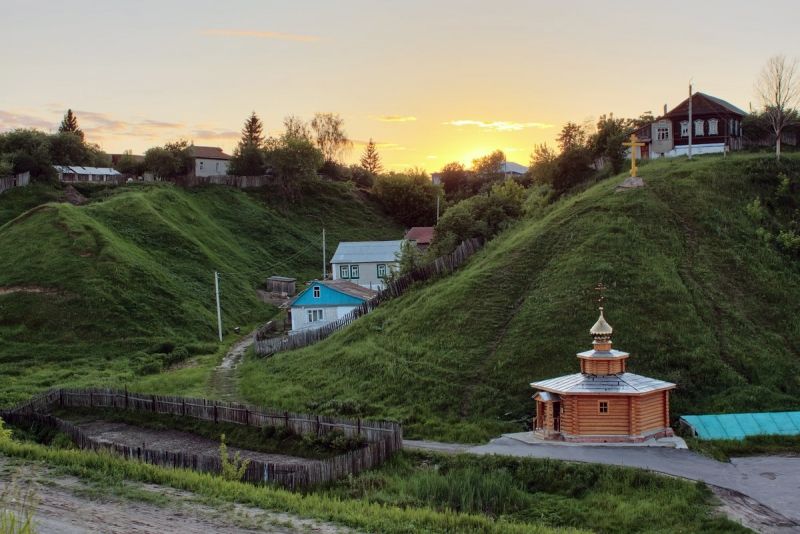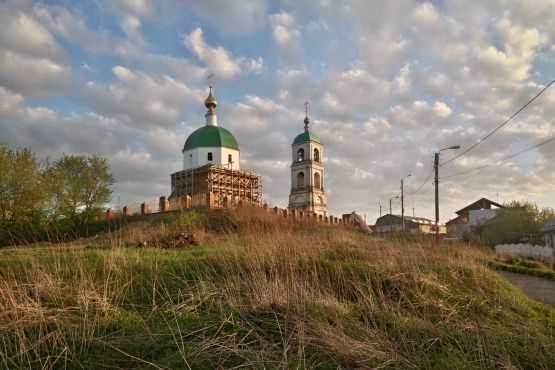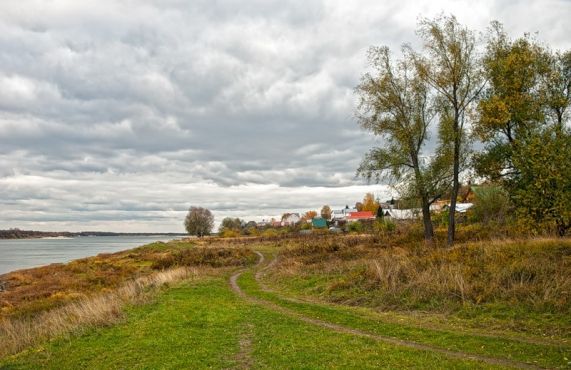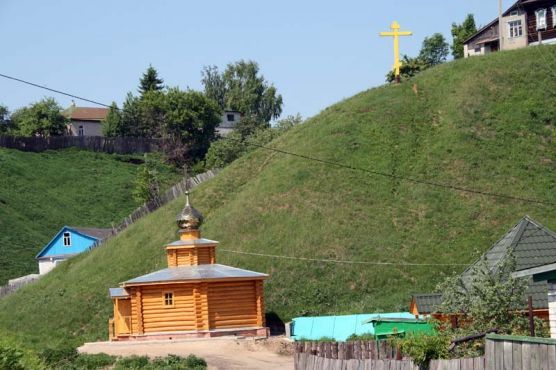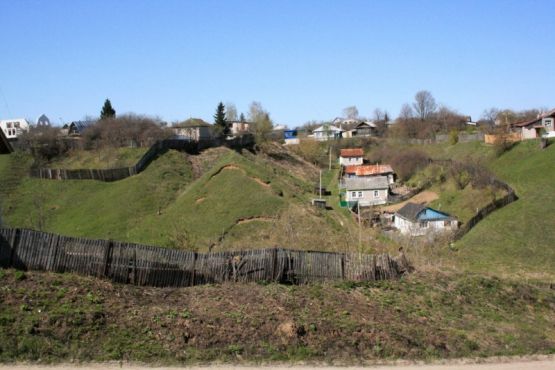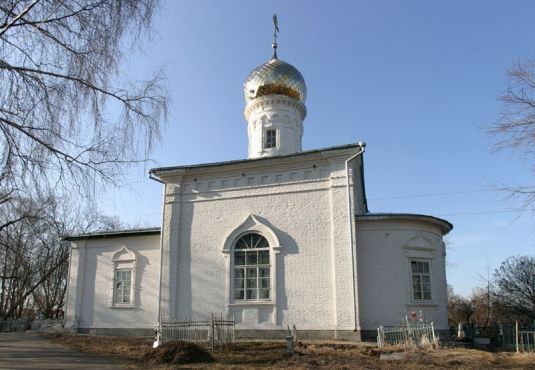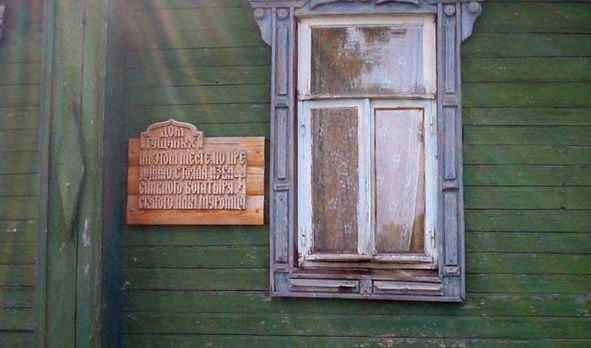Karacharovo - the birthplace of Ilya Muromets
- Address:
- Murom, micro-district Karacharovo
- GPS:
- 55.54029272, 42.08002927
The village of Karacharovo, according to written sources, is known since the 17th century. It belonged to the princes of Cherkasskies, Sheremetevs, Razumovskies. Thanks to E.A. Razumovskaya, wife of the Minister of Education Count S.S. Uvarov, as a dowry, Karacharovo in the early 19th century passed to the Uvarovs. Since 1852 the noble estate "Krasnaya Gora" ("Red Mountain") in Karacharovo belonged to the family of the scientist-archeologist, one of the founders of the Moscow archaeological society and the Moscow Historical Museum A.S. Uvarov. Today there preserved several monuments of architecture in the estate: the master’s house, two annexes, outbuildings and a linden alley. Currently, on the territory of the estate there is a military unit (pontoon-bridge regiment).
In the 20th century, with the rapid growth of Murom, the town line reached the borders of the village, and in the 1960s it administratively became part of the city as one of its districts.
But first of all, the village of Karacharovo is well-known, thanks to the hero Ilya Muromets, one of the main heroes of the Old Russian epic embodying the national ideal of the hero-warrior (the Kiev cycle of the epic "Ilya Muromets and the Nightingale the Robber", "Ilya Muromets and frigging Idol", "The quarrel between Ilya Muromets and Prince Vladimir", etc.). It is believed that the birthplace of Ilya Muromets is the village of Karacharovo near Murom. Most of the bylinas about Ilya Muromets begin with the words: "From that town from Murom, from the village of Karacharovo...".
It is assumed that Ilya Ivanovich Gushchin (folk tradition identified him with the famous hero Ilya Muromets) was born about 1143 in the village of Karacharovo near Murom in the family of a peasant Ivan Timofeevich and his wife Euphrosynia Yakovlevna. He was 177 cm tall, that is, at that time he was considered very tall, a bogatyr (hero), much higher than his contemporaries. From childhood and up to 33 years, Ilya, as the epics say, "was sitting on the stove without getting down". Investigation of his surviving remains showed that Ilya had problems with the backbone (additional spines on the vertebrae of the lumbar region, pinching the nerves of the spinal cord and causing paralysis of the limbs), which, apparently, limited mobility. Ilya miraculously received healing, according to legend, from three elders, beggar wayfarers, who, among other things, rewarded him with heroic strength and predicted that "death in battle is not written to him".
After the healing, Ilya adopted Orthodoxy. For many years he was in the squad of the Kiev prince, was "the first bogatyr in Kiev," who did not know defeats. Ilya Muromets was famous for his numerous military acts of bravery and unprecedented power, which he used absolutely unselfishly, only to fight against the enemies of the Fatherland, to protect Russian people and restore justice.
Having received in one of the battles with the Polovtsians an incurable wound in the chest, Ilya took monastic vows at the Kiev-Pechersk Lavra. At that time, many warriors did this, replacing the weapons with spiritual ministry. Presumably, Ilya Muromets died at the age of 45-55 years. His relics rest in the Near Caves of the Kiev-Pechersk Lavra. He was canonized in 1643 as St. Elijah Pechersky. The Russian warrior-host considers the holy hero to be its patron, noting his memory, according to the church calendar, on January 1.
The village of Karacharovo has preserved the sights associated with the name of Ilya Muromets. Local legends say that after healing the hero helped his father to root out stumps before plowing the fields, pulled them out of the ground with his hands and threw them from the high Karacharovo hills right into the Oka. There were so many stumps that even a large island appeared in the current of the river.
The view on the island still opens from the Trinity Church. Built in 1828, the stone temple stands in place of the old wooden Trinity Church, in the foundation of which the first oak logs, as the local legend says, were laid by the hero Ilya Muromets himself. Now the temple is being restored, only its bell-tower is reconstructed, inside of which there is a chapel. It contains the icon of St. Elijah of Pechora (of Murom) with a part of his relics, brought from the Kiev-Pechora Lavra.
The first modern icon of Ilya of Murom was written in Murom in 1992 on the initiative of representatives of the Gushchins family. On the day of the memory of the saint in 1993, the icon with a part of the relics was solemnly transferred to the restored church of Guria, Samon and Aviv (built in 1845) in Karacharovo, which stands in a rural cemetery.
Down to the Oka River past the Trinity Church there is a road. There, at the mouth of the Karacharovo ravine there is a wooden chapel and a bath near the spring of Ilya Muromets. It is believed that this source came from a blow to the ground of the hooves of Ilya Muromets’ heroic horse. There are no less than eight such sources along the banks of the Oka. They are also called "skoks" (where the horse allegedly bounced off the ground) in memory of their miraculous origin. Water in the spring is considered curative, and people come for it from all over Murom. Above the spring on the hill there is a wooden cross in memory of Ilya Muromets.
On one of the houses in Karacharovo on Priokskaya Street, which, according to legend, stands on the site of the former hut of Ilya Muromets, a memorial plaque is installed.
 Tourism portal of the
Tourism portal of the